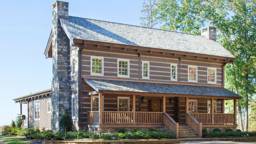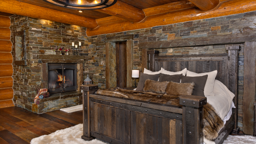
The humble ranch is making a comeback. The uni-level design, introduced by California architect Clifford May just after World War II, quickly became the go-to style of the 1950s. It was partly due to the backlash against the boxy houses of the day, but for the most part, the layout just made sense, especially for the warmer climates of the Southwest U.S.
The ranch’s 21st century rebirth is happening for a variety of reasons, albeit with some push back. Over the past few decades we’ve grown to love our two, three or even four stories of space to accommodate everything from exercise rooms, music studios, media rooms, man caves, fem lounges, elite kitchens, home offices, butler pantries, in-law suites and, of course, storage. And we’re not just talking closets, but specialty storage for seasonal decorations and dishware as well as small appliance pantries, separate food pantries, wine cellars, trophy rooms and safe rooms. All of which take up space; all of which could be accommodated in a smaller footprint when you stack the rooms on top of each other. What land developers realized is that you can build a lot more square footage on a smaller piece of property, increasing density while reducing raw land and infrastructure costs in the process. Thus, the McMansion was created, and Americans have resisted giving it up.
That is, until now.
See also A Day in the Life at Lone Mountain Ranch
 The reality of aging can make multi-level living daunting. Couple that with the energy required to heat and cool large square footage over multiple stories, and we start to look for solutions to keep us from being forced out of our homes as we grow older. Ranch-style homes fit the bill, and numerous trends in today’s ranch designs have evolved as a result. Here’s how:
The reality of aging can make multi-level living daunting. Couple that with the energy required to heat and cool large square footage over multiple stories, and we start to look for solutions to keep us from being forced out of our homes as we grow older. Ranch-style homes fit the bill, and numerous trends in today’s ranch designs have evolved as a result. Here’s how:
-
Ranch footprints have expanded from the 1,200 to 1,800 square feet we had 50 years ago, to 2,500 to 3,500 or more today.
-
Distinct separation between the kitchen, dining and living rooms are now “open concept” plans.
-
By removing walls, we now rely on the ceilings to define our spaces. This has created the trend for higher, vaulted spaces. Now, ceilings are typically 10 feet tall or greater. The kitchen may have a flat ceiling and is adjacent to the great room with vaulted ceilings and heavy timber rafters and beams. In general, more attention is being paid to making ceilings more interesting. • Single-level living also means that spaces need to be flexible. The home office can morph into a guest bedroom when needed. This is true for the hobby/craft room as well. Even laundry areas are pulling double duty. We often build in pet grooming facilities in the laundry/mud room.
-
Natural light is now more important (remember as we age, we need more light), which demands larger windows and doors.
-
Large doors, even huge multi-panel doors, are in demand as we integrate the interior space with exterior decks and patios to expand the living area. This blending of indoor/outdoor space is more popular than ever. I routinely install 16- to 20-foot-wide folding/pocketing/sliding doors solely for this purpose.
-
Home elevators are being integrated more frequently. These have actually become quite popular and are much more affordable today than they were 10 years ago. Almost all of the multi-story homes I design today have an elevator shaft designed into the space, so it can be fitted with a lift if/when it becomes necessary.
-
Along with a main-level master suite, we are seeing what I call the “junior master.” Many of us have had to care for an elderly family member in which they needed single-level living, also. This is a little different from the extra bedrooms and bathrooms typical to home design. The junior master should function as an independent suite, with a sitting area, larger closets and an ADA-compliant bathroom.
-
Right sizing” the house means we design a home that is neither too big nor too small. This requires that we be very honest with ourselves as to what’s important in our lives; how we will live in our home now and in the future; and what possessions we keep, as well as what we are willing to maintain, throughout our time in the house.
So the ranch is being re-invented to allow for the convenience and accessibility of single-level living. With the prevalence of well-designed, open-concept plans and more efficient insulation and the removal of tricky stairs, the ranch is a smart solution for people in all phases of life.
See also Back to the Ranch: a Texas Log Home
Michael Grant is a prolific log, timber and hybrid home designer and the owner of Modern Rustic Homes in Ellijay, Georgia.







_11868_2023-12-20_08-12-256x288.jpg)



